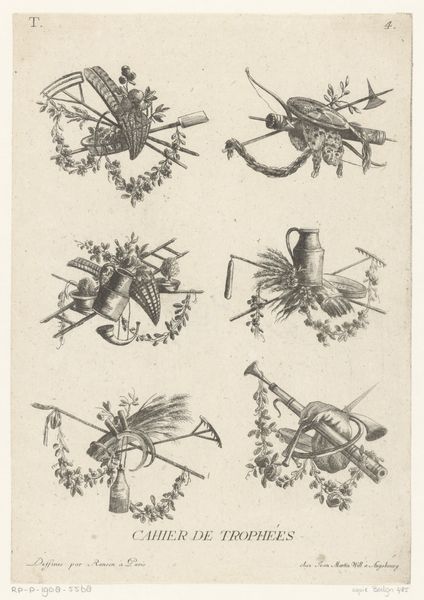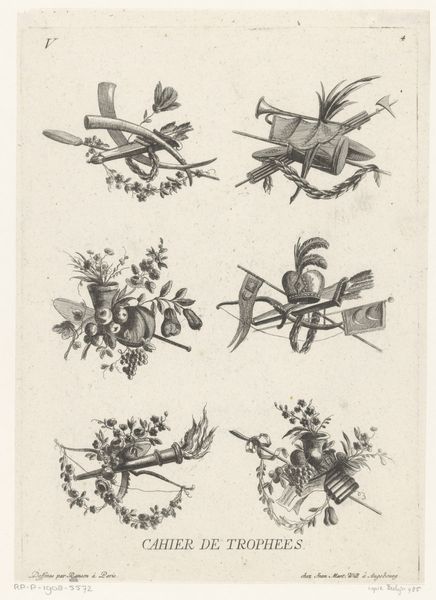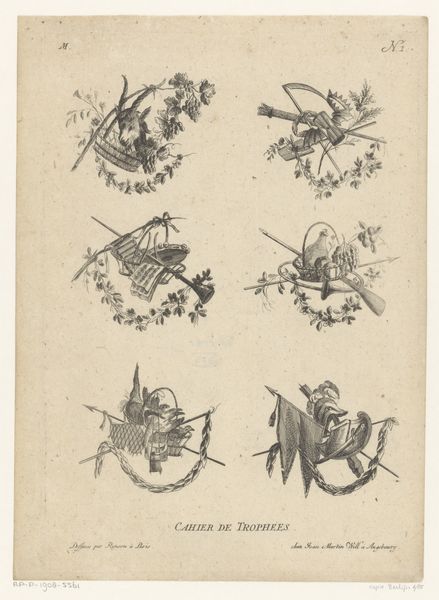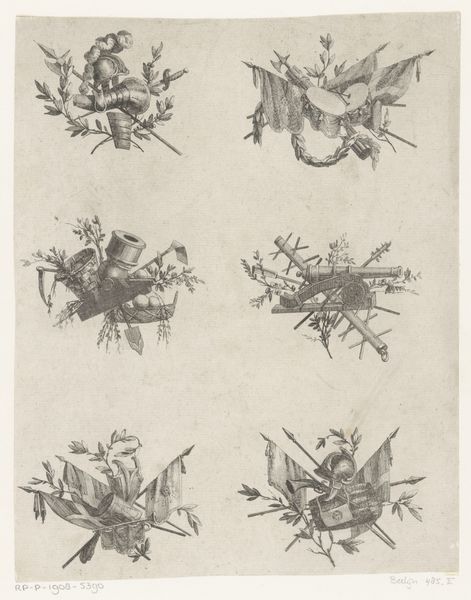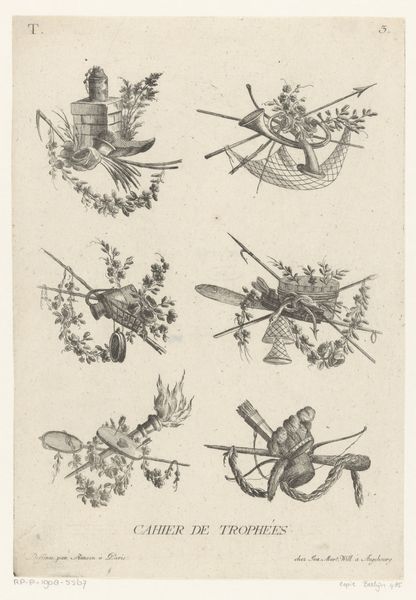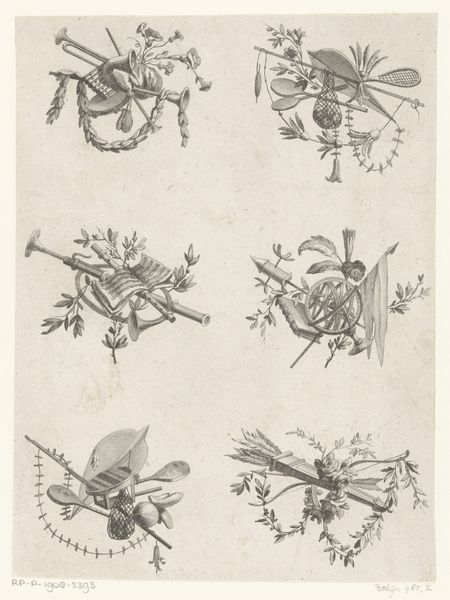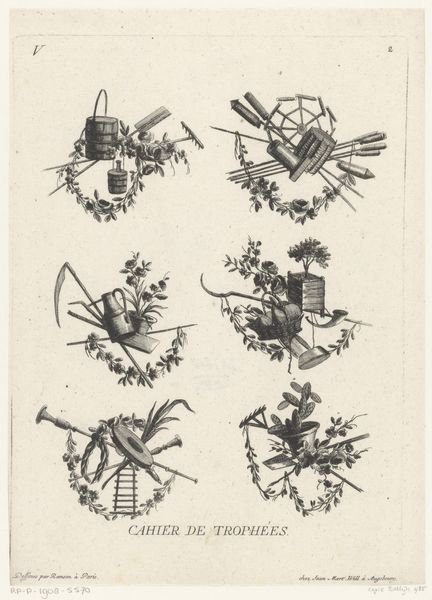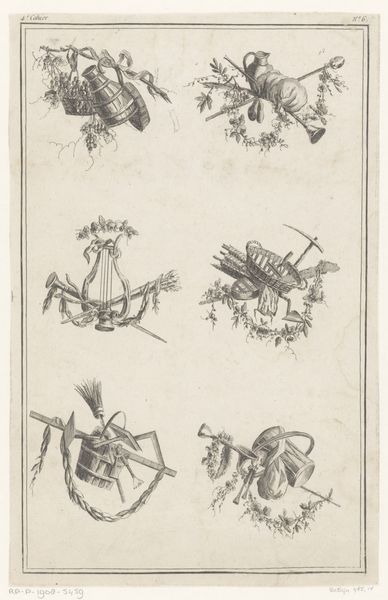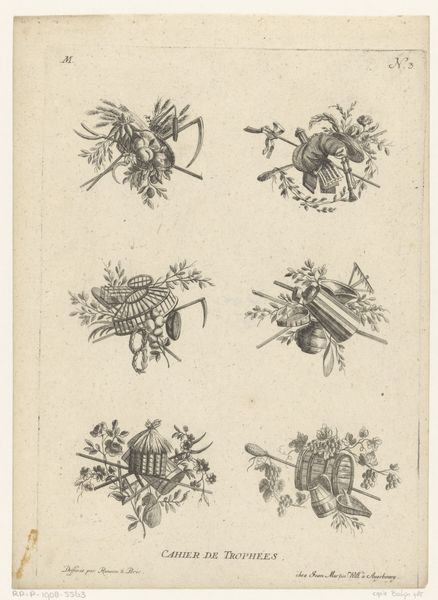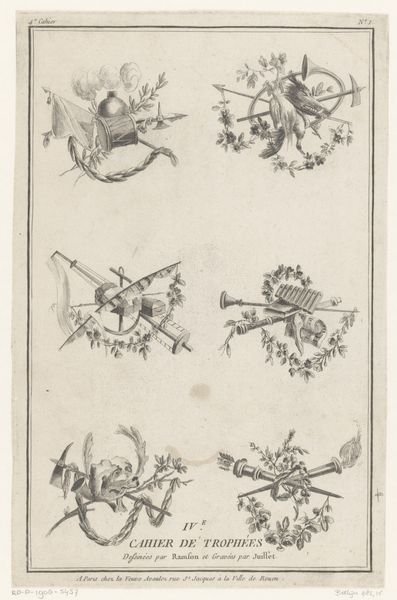
Dimensions: height 289 mm, width 203 mm
Copyright: Rijks Museum: Open Domain
Editor: This is "Trophies with Agricultural Objects and Cornucopia," a print made between 1746 and 1806. It's really interesting. At first glance it looks purely decorative, but the images – the tools, the horn of plenty – make me wonder about their symbolism. What do you see in this piece? Curator: I see echoes of classical antiquity reinterpreted through a Baroque lens. Notice how the artist combines everyday agrarian tools with elements of abundance and classical trophies. The objects aren’t merely decorative, they carry centuries of cultural weight. Editor: How so? Curator: Well, the horn of plenty, or cornucopia, has long represented prosperity and the earth's bounty, right? Pairing it with farming tools – rakes, baskets – elevates the act of cultivation. It speaks to a culture that values the fruits of the land, portraying it as both practical labor and a source of wealth. Think about how that resonated in the 18th century, particularly among emerging merchant classes who saw land ownership as a status symbol. Editor: That’s interesting. It's like the artist is making a statement about the virtue of agriculture, even within this ornate style. Curator: Precisely. The "trophies" are usually associated with military victory. But here they are emblems of pastoral success. Does that shift in symbolism suggest anything to you? Editor: Perhaps that society was starting to value agricultural achievements just as much as, or perhaps even more than, military conquests. Curator: Exactly. This isn’t just a pretty print; it encapsulates evolving cultural values. I think that studying the image and all its different components can provide keys to unlock cultural values. Editor: That's given me a new perspective. I wouldn’t have thought about those hidden messages initially, only focusing on the Baroque style. Now I see there's a lot more than meets the eye.
Comments
No comments
Be the first to comment and join the conversation on the ultimate creative platform.
